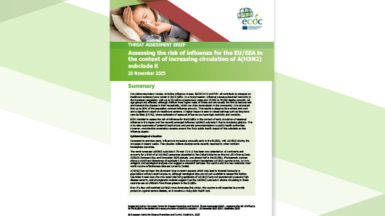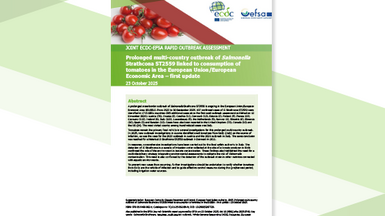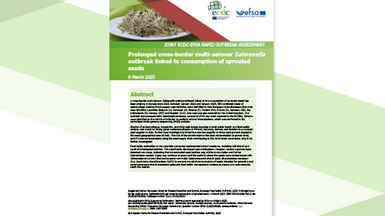Risk assessment on xenotropic murine leukemia virus-related virus (XMRV) and its implications for blood donation
ECDC plays an important role in providing its stakeholders with scientific advice when requested. On 23 September 2010 ECDC received such a request from the European Commission’s DG SANCO (Directorate C – Public Health and Risk Assessment).
ECDC was asked: to assess the epidemiological profile of XMRV (Xenotropic murine leukemia virus-related virus); to assess the scientific evidence of the link between chronic fatigue syndrome (CFS) and the presence of XMRV in the blood and transmission of XMRV via blood donation; to advise the Commission on the possible value of introducing deferral criteria and/or testing requirements in the EU.
ECDC’s risk assessment found that there is not enough evidence to link xenotropic murine leukemia virus-related virus (XMRV) and chronic fatigue syndrome (CFS). Implementation of blood donor screening on an EU-wide scale were therefore not recommended to the European Commission.
Executive Summary
Following a request from the European Commission, ECDC produced in July 2011 a risk assessment to assess the possible implications of XMRV on blood donation. A review of the published literature at the time showed that there is not enough evidence to reliably assess the potential role of the virus in human pathology.
Many questions remain regarding the possible prevalence of XMRV in the human population, the incidence of XMRV in cases of CFS and the extent of genetic variation between XMRV isolates. Although it is theoretically presumed that XMRV could be transmitted through blood transfusion, no such transmission event has been identified, and there is no known evidence of XMRV infection, related illness or disease in transfusion recipients. XMRV may represent another emerging infectious agent that poses a risk to transfusion safety, and as with other agents, it is imperative that the action taken to ensure blood safety is swift and effective, yet based on the best available science. Currently, the scientific data are incomplete and conflicting. It seems likely that the findings in two studies on XMRV and murine leukemia virus in CFS patients were potentially due to laboratory contamination, and the majority of the evidence favours the conclusion that there is no causal relation between XMRV and CFS. With the development of validated assays, additional data will become available in the near future which will help inform decisions on blood donor eligibility and screening.
Background: XMRV is a member of the Gammaretrovirus genus of the Orthoretrovirinae subfamily of Retroviridaewith high sequence similarity to endogenous murine leukemia viruses. It is believed to have originated in mice and is the first agent of its class to be identified in humans; it likely evolved as a result of a recombination event between polytropic and xenotropic MLV. Similar agents are found in a wide range of mammalian species and include the porcine endogenous retrovirus, the feline leukaemia virus, the koala retrovirus and the gibbon ape leukaemia virus, that can cause leukaemia and other syndromes in their host species.
In humans, chronic fatigue syndrome (CFS) – also referred to as myalgic encephalomyelitis (ME) – is a disease of unknown aetiology but suspected to involve viral infection and characterised by debilitating fatigue and other symptoms.







